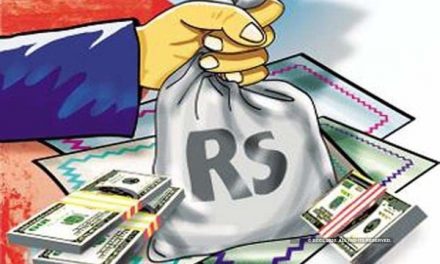A business plan is all conceptual until you start filling in the numbers and terms. The sections about your marketing plan and strategy are interesting to read, but they don’t mean a thing if you can’t justify your business with good figures on the bottom line. You do this in a distinct section of your business plan for financial forecasts and statements. The financial section of a business plan is one of the most essential components of the plan, as you will need it if you have any hope of winning over investors or obtaining a bank loan. Even if you don’t need financing, you should compile a financial forecast in order to simply be successful in steering your business.
What is financial planning and analysis?
Simply put, FP&A is the process of determining how your company will afford to achieve its vision, strategic goals, and objectives. While accounting is about looking backward, FP&A is about looking forward.
In the world of startups, you can tell just how important planning is by looking at some of the companies with no revenue and huge valuations – much of the company’s value comes from its projected future earnings. It’s safe to say that no matter the size of your company, you are going to need to engage in budgeting, forecasting, and analysis that supports the major decisions of its executives.
Building the financial talent you need in a startup or small company is a gradual process. In a new venture, the FP&A function is often handled by the founders with outsourced assistance. As the company grows, the controller or CFO will often be in charge of FP&A. And as the company becomes larger, a full-time FP&A team will most likely be a valuable investment.
The increasing magnitude of financial complexity, employee count, revenue, and outside funding are the drivers of the evolution of the financial infrastructure in the startup. Generally speaking, with venture funding in hand, more than 30 employees, and/or generating solid revenues (€5-20 million), it’s time to think about formally instituting an FP&A department within your company.
FP&A will be an integral part of finance and accounting, whether in-house or outsourced. The FP&A manager will assist with the preparation of internal and external reports, materials for the board of directors, monthly financial analysis material and provide ad-hoc planning and analysis for the organization.
In a well-structured company, the controller will manage financial accounting, and the FP&A person(s) will be in charge of management accounting (article coming soon).
The workflow of an FP&A manager includes:
- Creating systems and processes on a daily basis
- Short-term cash flow analysis and forecasts
- Routine analysis of internal controls
- Creating and analyzing financial models and simulations
- Anticipating scenarios about the company’s cash flow and financial projections
- Implementing monthly, quarterly, and annual growth strategies
How to Write the Financial Section of a Business Plan: The Purpose of the Financial Section
Let’s start by explaining what the financial section of a business plan is not. Realize that the financial section is not the same as accounting. Many people get confused about this because the financial projections that you include–profit and loss, balance sheet, and cash flow–look similar to accounting statements your business generates. But accounting looks back in time, starting today and taking a historical view. Business planning or forecasting is a forward-looking view, starting today and going into the future.
The Components of a Financial Section
A financial forecast isn’t necessarily compiled in sequence. And you most likely won’t present it in the final document in the same sequence you compile the figures and documents.
- Start with a sales forecast. Set up a spreadsheet projecting your sales over the course of three years. Set up different sections for different lines of sales and columns for every month for the first year and either on a monthly or quarterly basis for the second and third years. “Ideally you want to project in spreadsheet blocks that include one block for unit sales, one block for pricing, a third block that multiplies units times price to calculate sales, a fourth block that has unit costs, and a fifth that multiplies units times unit cost to calculate the cost of sales (also called COGS or direct costs),” “Why do you want the cost of sales in a sales forecast? Because you want to calculate gross margin. Gross margin is sales less cost of sales, and it’s a useful number for comparing with different standard industry ratios.” If it’s a new product or a new line of business, you have to make an educated guess. The best way to do that is to look at past results.
- Create an expense budget. You’re going to need to understand how much it’s going to cost you to actually make the sales you have forecast. Berry likes to differentiate between fixed costs (i.e., rent and payroll) and variable costs (i.e., most advertising and promotional expenses) because it’s a good thing for a business to know. “Lower fixed costs mean less risk, which might be theoretical in business schools but are very concrete when you have rent and payroll checks to sign. “Most of your variable costs are in those direct costs that belong in your sales forecast, but there are also some variable expenses, like ads and rebates and such.” Once again, this is a forecast, not accounting, and you’re going to have to estimate things like interest and taxes. Go with simple math. Multiply estimated profits times your best-guess tax percentage rate to estimate taxes. And then multiply your estimated debts balance times an estimated interest rate to estimate interest.
- Develop a cash-flow statement. This is the statement that shows physical dollars moving in and out of the business. “Cash flow is king’. You base this partly on your sales forecasts, balance sheet items, and other assumptions. If you are operating an existing business, you should have historical documents, such as profit and loss statements and balance sheets from years past to base these forecasts on. If you are starting a new business and do not have these historical financial statements, you start by projecting a cash-flow statement broken down into 12 months. It’s important to understand when compiling this cash-flow projection that you need to choose a realistic ratio for how many of your invoices will be paid in cash, 30 days, 60 days, 90 days and so on. You don’t want to be surprised that you only collect 80 percent of your invoices in the first 30 days when you are counting on 100 percent to pay your expenses. Some business planning software programs will have these formulas built in to help you make these projections.
- Income projections. This is your pro forma profit and loss statement, detailing forecasts for your business for the coming three years. Use the numbers that you put in your sales forecast, expense projections, and cash flow statement. “Sales, lest the cost of sales, is gross margin. “Gross margin, fewer expenses, interest, and taxes, is net profit.”
- Deal with assets and liabilities. You also need a projected balance sheet. You have to deal with assets and liabilities that aren’t in the profits and loss statement and project the net worth of your business at the end of the fiscal year. Some of those are obvious and affect you at only the beginning, like startup assets. A lot are not obvious. “Interest is in the profit and loss, but repayment of principal isn’t. “Taking out a loan, giving out a loan, and inventory show up only in assets–until you pay for them.” So the way to compile this is to start with assets and estimate what you’ll have on hand, month by month for cash, accounts receivable (money owed to you), inventory if you have it, and substantial assets like land, buildings, and equipment. Then figure out what you have as liabilities–meaning debts. That’s money you owe because you haven’t paid bills (which is called accounts payable) and the debts you have because of outstanding loans.
- Breakeven analysis. The breakeven point is when your business’s expenses match your sales or service volume. The three-year income projection will enable you to undertake this analysis. “If your business is viable, at a certain period of time your overall revenue will exceed your overall expenses, including interest.” This is an important analysis for potential investors, who want to know that they are investing in a fast-growing business with an exit strategy.
One of the biggest mistakes business people make is to look at their business plan, and particularly the financial section. ”The plan is useless, but planning is essential.’ What people do wrong is focus on the plan, and once the plan is done, it’s forgotten. It’s really a shame because they could have used it as a tool for managing the company.
The modern finance function
The bad news about FP&A is that the work can be boring. The good news is that it’s quickly becoming more interesting. FP&A professionals are in essence storytellers. Using numbers as their language, they provide insights into the future by connecting the dots, thus unlocking value.
In other words, FP&A is about anticipation – making sure you get answers to questions that link planning and analysis to choices and strategic business decisions. FP&A answers strategic questions, ensures good accounting, analyzes product profitability, and of course, it’s used to determine how much money your venture needs, when is it needed, and how long will it last.
Any size company can benefit from engaging in FP&A activities, even if you have to outsource them at first. The “F” in FP&A speaks for itself; the finance function is just part of a broader company’s responsibility to plan, acquire, and manage capital to efficiently run the business.
To make sure the value chain, the cash cycle and the other economic fundamentals make sense in terms of the business opportunity and overall company strategies, try to get answers to the following questions:
- What are your gross and operating margins?
- What is your profit potential?
- How durable is the stream of profits?
- What are the variables that go into determining pricing and produce profits?
- What are your fixed, variable and semi-variable costs?
- What assets are used and will be used in the business?
- How many months to break even given your proposed financing?
- How many months to reach positive cash flow?
- When will you run out of cash?
- Can you foresee any significant changes in cash flow as you grow?











